Red Harbinger tests the Cryptocurrency Chassis Market: The DopaMINE
by Ian Cutress on February 19, 2014 5:33 PM EST- Posted in
- Cases/Cooling/PSUs
- GPUs
- Red Harbinger
- Mining
- Cryptocurrency
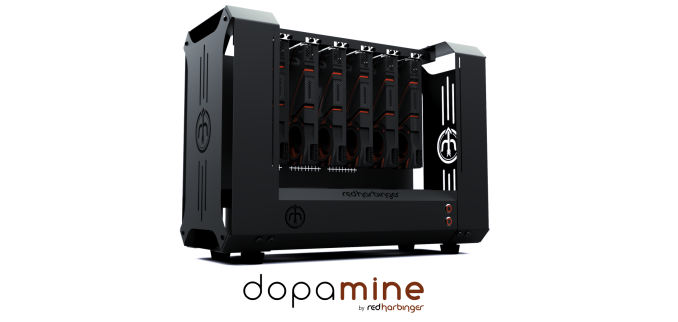
With the ups and downs of cryptocurrencies like Bitcoin, Litecoin and Dogecoin now part of the zeitgeist; notable trends are starting to happen. The software is being probed more and more for weaknesses (such as the recent Mt.Gox issues), and the prices of scrypt mining hardware such as AMD GPUs are going through the roof in the US, at one point hitting $900 for an R9 290X, but quickly dropping to $700 – still well above the MSRP at launch. We have reported on motherboards from ASRock and Biostar being released specifically for coin mining, probing the market to test for volume. Many system integrators (like SCAN or OCUK in the UK) will also sell you a fully built system designed to mine coins. Naturally the next progression is chassis production.
Up until this point, finding ways in which to place your GPUs can be tricky – this is especially true if you are in a limited space environment. Many enthusiasts in this area will look at multiple things – initial price of hardware, coin production, and throughput density (GPUs in a motherboard/case). At least three of the regular editors here at AnandTech are casually involved in mining to various degrees of success, including me – I am running a few systems at around a dozen cards, which can be quite noisy and generate some heat. There are others who take it to the extreme, and will run hundreds of GPUs.
Building a setup for mining cards can be difficult. Cases cause heat to build up, but are more stackable than open-air setups. There is also an issue of noise and heat direction – finding a source for that cold air and somehow getting rid of the hot stuff. For those that monitor the mining forums, there are many fixes to this issue – some home brew, some involving Ikea, others with elaborate shelving units on wheels, and the crate method (examples of each).
For users without the time to invest in case design, Red Harbinger is testing the market with their new mining chassis, the DopaMINE:
Red Harbinger is known in case design circles for some innovative products, such as The Cross Desk (a £1200 desk claimed to be ‘the last desk you will ever buy’), and the DopaMINE is the latest thought from the small outfit. This product is to initially be crowd funded – many of the companies making mining-specific products are often wary about sale volume, so this is a good way to complete orders before production starts.
The DopaMINE is designed to be a six GPU, one motherboard + dual power supply case, capable of being stacked as well as providing sufficient airflow. The chassis will support mini-ITX all the way through to E-ATX, have three 120/140mm fan mounts on the bottom, and has 685mm x 508mm x 305mm dimensions. The chassis will come in black, with a limited edition run in white as well.
Red Harbinger are also promoting the chassis as a test bed / open-air chassis, which can be repurposed as a compute machine if the bottom falls out of scrypt mining. The early bird versions are currently $200 each, with the main run will cost $250 – this includes shipping within the US, add $50 for international shipping. In a field where saving a few dollars here or there makes a big difference, the DopaMINE is perhaps expensive as a case, but it does condense systems into easy-to-handle units.
On a closer look it might seem that stacking the machines might be pointless if the heat from one set of miners is used to cool another set. Ideally there needs to be some cross airflow left/right as well as bottom to top, and as I was discussing with Ryan earlier, blower GPUs might work best.
As this is a crowd-funded project, there is no guarantee that the goal will be reached, but it will be an interesting marker for mining chassis from other companies. Red Harbinger is currently looking at an August estimated delivery date, with a $20,000 goal to be reached by April 4th. I have put an order in for a white one – at the very least I should be able to condense three of my chassis down to one, or I will put it to work for compute.
Source: Indiegogo


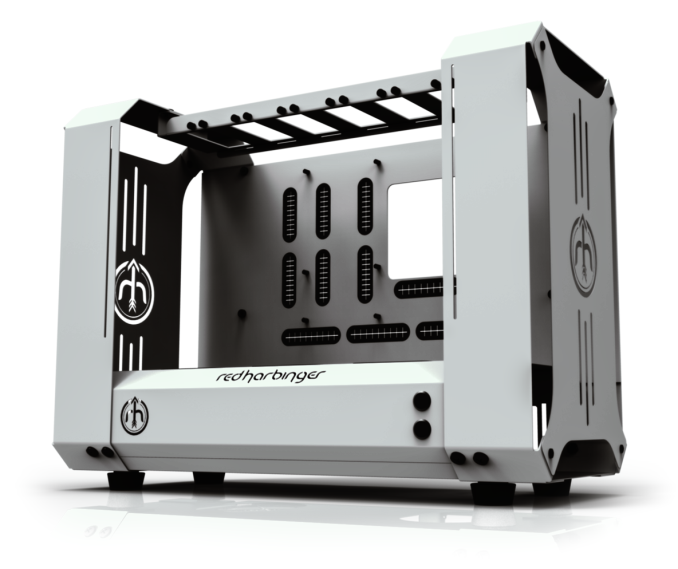
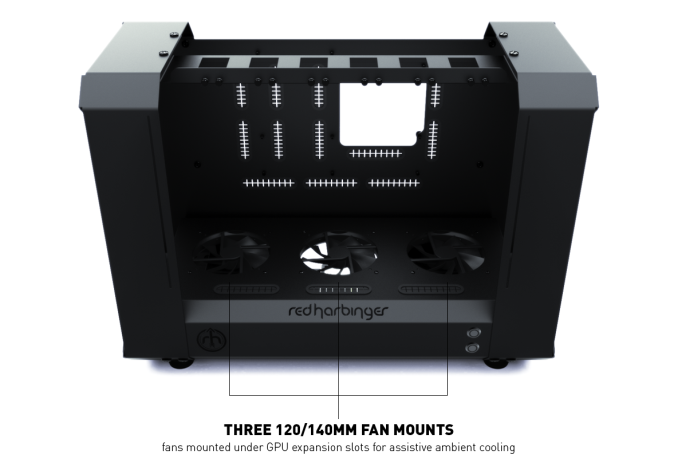
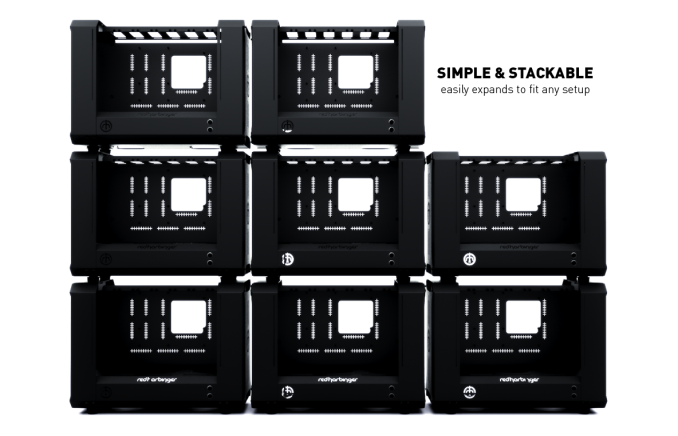
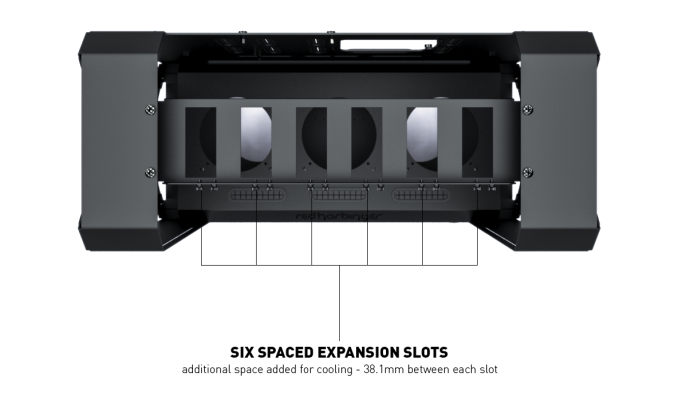
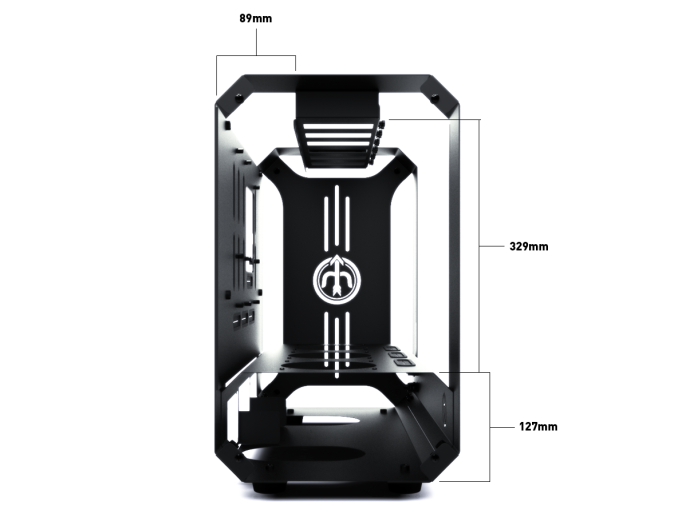














27 Comments
View All Comments
Subyman - Wednesday, February 19, 2014 - link
Heck with using it for mining, I want one for my gaming PC. It certainly looks unique!ingwe - Wednesday, February 19, 2014 - link
I have no interest in mining, but it looks like a pretty cool case.I would never buy it, but it looks cool nonetheless.
atean - Wednesday, February 19, 2014 - link
I use Xilinx Virtex-7 FPGAs for mining.Notmyusualid - Thursday, February 20, 2014 - link
Very cool product.Could be useful for 'password recovery', and some other GPU compute task.
But a year too late to market for coin mining. Its all FPGAs & ASICs now. Really.
And if you were to continue with GPUs, then you might still waste your time in the Americas / Europe (especially Denmark), best to come to Thailand where electricity is cheap. Almost half the price....GPU mining might still work here, but for how long? Difficulty rises all the time...
Death666Angel - Thursday, February 20, 2014 - link
For SHA256 cryptocoins maybe, but scrypt based ones are still superior on GPUs. There is one ASIC chip I'm aware of that does ~1/10 the hash rate of a 7950 (60KH/s vs 600KH/s) but costs 100USD.ET - Thursday, February 20, 2014 - link
There are a few ASICs on the way which promise a lot better rate than GPU's. For example Alpha Technology's Viper 5Mh/s at under 70W and 25Mh/s at 300W. The days of GPU mining are numbered.cryptomarket - Thursday, February 20, 2014 - link
I have been wondering lately if the overly high rates of new coin release every week are actually sustainable from a mining perspective. Will the release rate eventually exceed the supply of miners willing to put the money down to start? Will a processing power crunch eventually create a dire situation for all of the cryptocurrencies? For more insight please go to crypto-market-news.weebly.comMrSpadge - Thursday, February 20, 2014 - link
6 GPUs, well cooled and accessible, in a case which is far cheaper than any "professional" solution. This could be a game changer for any GP-GPU or PCIe-Accelerator number cruncher, who doesn't need to fit the boxes inside racks. There is a market for this outside *coins.Fenton - Thursday, February 20, 2014 - link
Did anyone proof read this before hitting publish? The chassis is interesting, but the writing is dreadful. It is genuinely hard to read as every paragraph is riddled with issues.Ian Cutress - Thursday, February 20, 2014 - link
Please email me your concerns - ian@anandtech.com